Introduction
In today's volatile economic landscape, navigating financial distress and steering a company back to stability requires a comprehensive understanding of the legal frameworks and strategic approaches available. The article delves into the intricacies of business rescue, starting with an exploration of various legal frameworks across jurisdictions, such as the United States' Chapter 11 and the UK's Insolvency Act 1986. It highlights the critical role of Business Rescue Practitioners (BRPs) in crafting and implementing effective recovery plans and addresses the numerous challenges faced during this process, including securing creditor support and managing internal resistance.
Furthermore, the article underscores the importance of balancing competing stakeholder interests and identifying the right time for intervention. Practical steps for overcoming insolvency are outlined, along with real-world case studies that offer valuable lessons on successful business rescue strategies. This guide provides indispensable insights for Chief Financial Officers (CFOs) and business leaders aiming to navigate financial challenges and achieve long-term stability.
Understanding the Legal Framework for Business Rescue
The legal structure regulating corporate rescue differs greatly between regions, each offering distinct methods and tactics for struggling enterprises. In the United States, Chapter 11 of the Bankruptcy Code provides a structured method for enterprises to reorganize under court protection. This allows companies to propose a reorganization plan, enabling them to continue operations while addressing their financial challenges. According to statistics from the Administrative Office of the U.S. Courts, total bankruptcy filings rose 13 percent in the twelve-month period ending September 2023, highlighting the relevance and utilization of such legal frameworks.
In contrast, the UK utilizes the Insolvency Act 1986, which includes provisions for administration, offering a more flexible restructuring process. 'Recent high-profile cases, such as the collapse of Wilko, underscore the critical role of these legal provisions in providing a lifeline for struggling enterprises.'.
On an international level, the Model Law on Cross-Border Insolvency, adopted by over 60 jurisdictions, facilitates cooperation and assistance in managing insolvency proceedings with a cross-border element. This framework, built on the idea of modified universalism, envisions the commencement of a main proceeding in a single jurisdiction, with non-main proceedings also playing a role.
James Mohs, an associate professor at the University of New Haven, emphasizes the importance of consulting with a bankruptcy attorney to navigate these complex frameworks and determine the best course of action. This multi-layered approach to business recovery, combining local and international legal provisions, is crucial for organizations aiming to manage financial distress effectively.
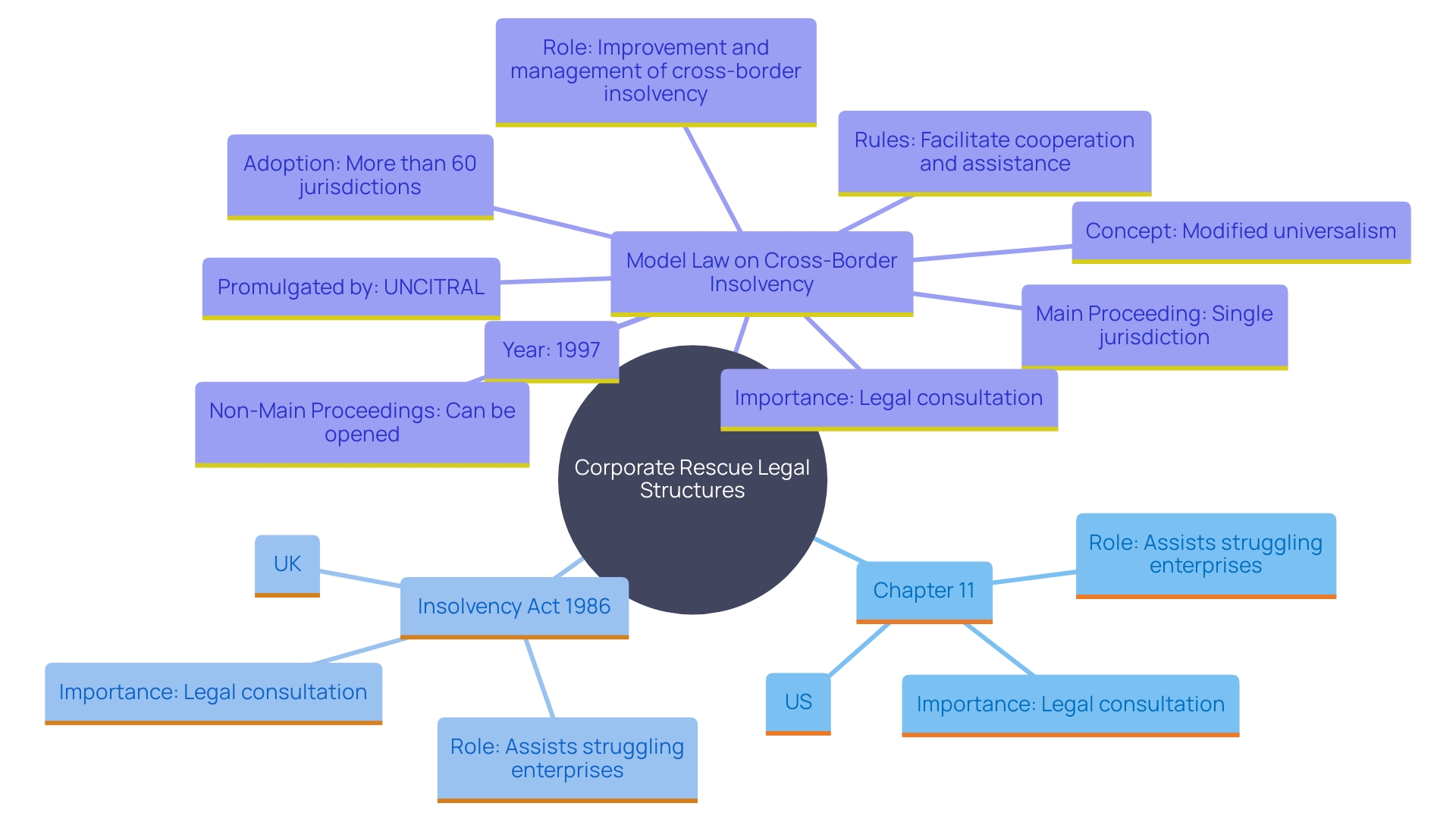
The Role of a Business Rescue Practitioner
A Business Rescue Practitioner (BRP) is essential in guiding financially troubled enterprises toward recovery. These experts thoroughly evaluate the organization's financial status, craft a comprehensive rescue plan, and mediate discussions with creditors. Their role is crucial in pinpointing the underlying causes of financial distress and enacting effective strategies for recovery. Evidence indicates that organizations undergoing structured resolution processes, like those facilitated by BRPs, see significant improvements. For instance, a report published in August 2023 highlighted that the average sales of companies surged by 76% within three years post-resolution, with many achieving operational break-even. "BRPs act as crucial intermediaries between management and stakeholders, ensuring all interests are represented and aligned for a successful turnaround, demonstrating their essential value in crisis management.".
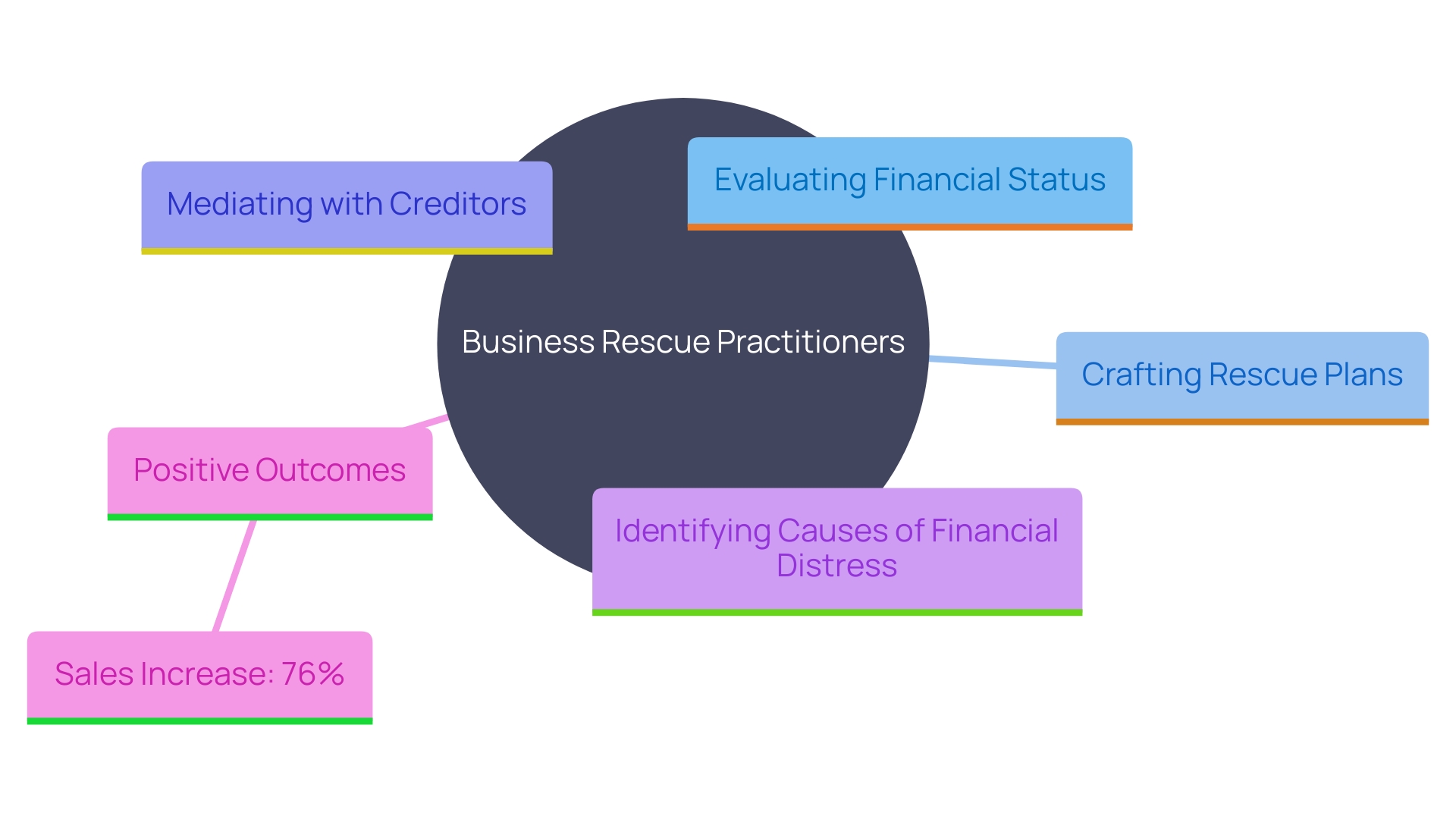
Challenges in Navigating Business Rescue Plans
Executing a business recovery strategy is filled with considerable difficulties. A key difficulty is securing the support of creditors, who often hesitate to accept restructuring proposals that don't fully address their claims. This reluctance can be seen in the case of ALSTOM, where initial rescue attempts failed, highlighting the importance of effective negotiation and transparent communication. Internal, resistance from management and employees can further complicate execution of initiatives, as seen in various restructuring efforts where change management strategies played a crucial role.
Transparent communication is vital in overcoming these challenges. As noted by Edouard Fernandez-Bollo from the European Central Bank, fostering resilience and sustainability in business models requires a balance between horizontal comparisons and attention to specific characteristics. This approach is essential for gaining stakeholder support and ensuring that the recovery plan aligns with long-term financial stability.
Moreover, external factors such as market conditions and competition add another layer of complexity. For instance, a Korean agricultural biotechnology firm faced significant external pressures but managed to turn around by leveraging advanced fermentation technology and addressing a major social issue. This shows that creative solutions and flexibility are essential for managing market challenges during a company recovery.
To reduce these risks and guarantee the success of recovery efforts, companies must utilize thorough continuity planning. This involves preparing for a range of potential disruptions, as illustrated by a humorous training video where two men in an elevator face various disasters, with only one being prepared. Effective organizational continuity planning can minimize operational disruptions and maintain critical services, reinforcing the importance of strategic foresight and preparedness.
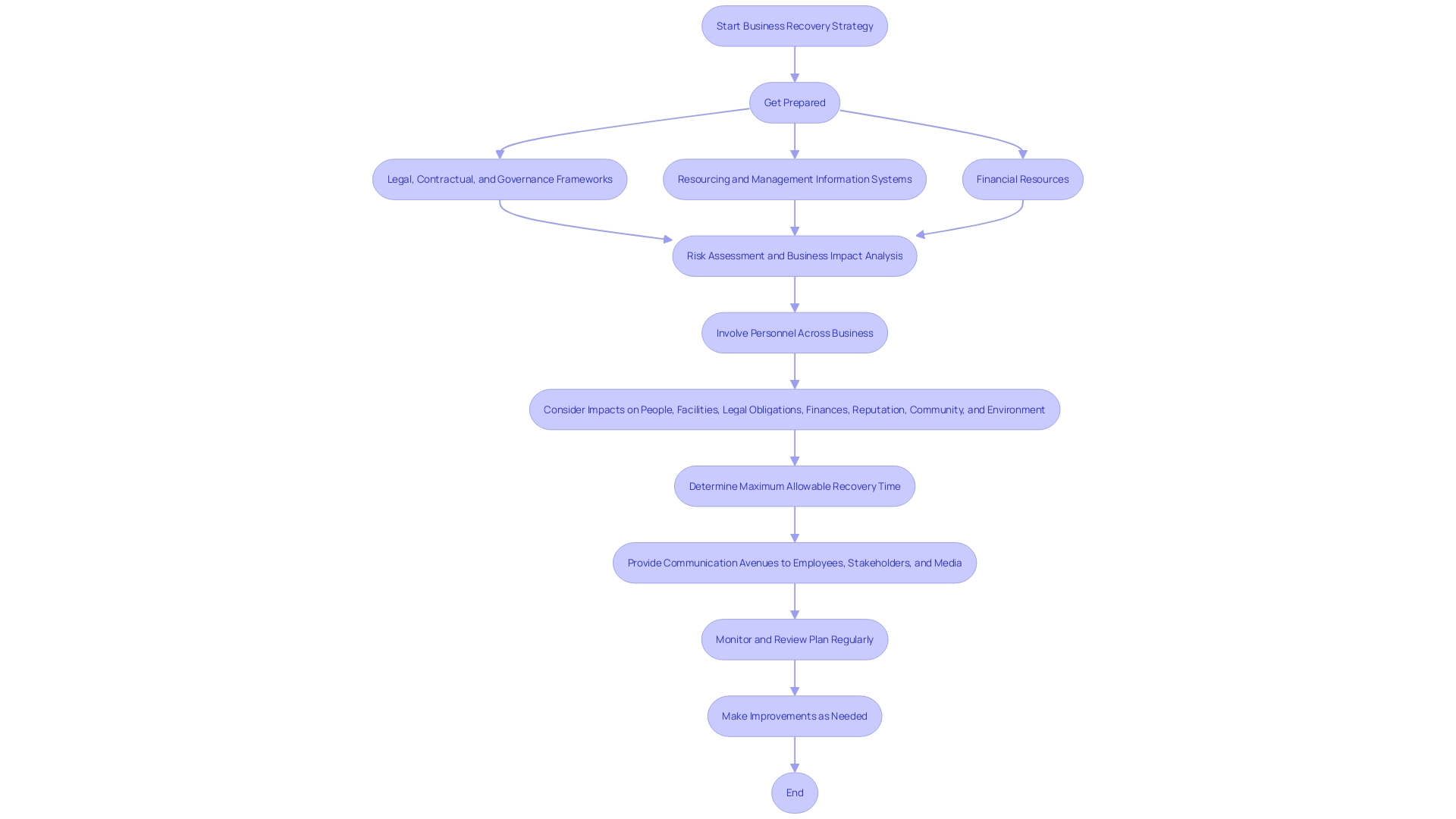
Balancing Competing Stakeholder Interests
In the process of organizational recovery, balancing the interests of various stakeholders—such as creditors, employees, and shareholders—is essential. Each group has its own priorities, which may conflict with one another. For instance, creditors typically seek to recover as much of their investment as possible, while employees may prioritize job security and benefits. An effective strategy for recovery must navigate these competing interests, often requiring trade-offs and negotiations to achieve a consensus that supports the long-term sustainability of the enterprise. "Joan Beets, an expert on organizational restructuring, emphasizes that the process fundamentally alters the operational and structural fabric of a business.". This transformation aims to enhance efficiency, reduce costs, and shift strategic focus, but it also brings uncertainty surrounding job security, shifts in roles or leadership, and potential changes in work culture. Additionally, out-of-court workouts (OCWs) have emerged as an alternative method of asset resolution during crises. These mechanisms offer a versatile method to arrange a recovery strategy, enabling organizations to keep functioning while guaranteeing a greater rate of creditor repayment. The World Bank's Business Insolvency Indicators measure the regulatory treatment of Cows in over 180 economies, highlighting their role in preventing the liquidation of viable companies and encouraging entrepreneurial activity.
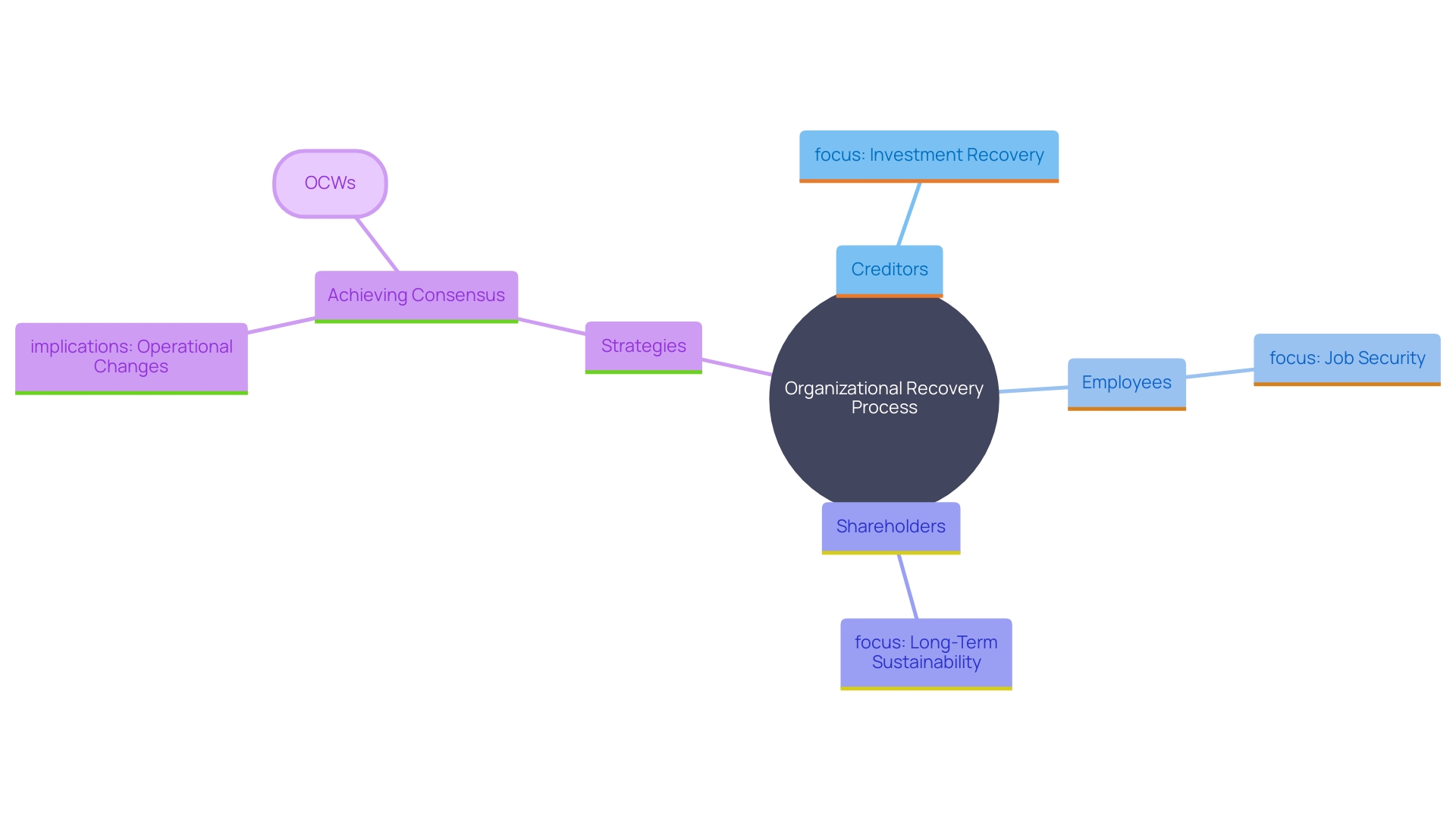
Identifying the Right Time for Business Rescue
Prompt intervention is essential in the business recovery process. Identifying the best time to launch a recovery strategy can greatly influence the result. Early signs of financial distress, such as declining sales, cash flow issues, or mounting debt, should prompt management to consider restructuring options. Proactive measures can prevent further deterioration of the organization's financial position and create a more favorable environment for negotiations with stakeholders. When confronting a possible crisis, out-of-court workouts (OCWs) provide a flexible method to negotiate a corporate recovery strategy, enabling firms to keep functioning while ensuring a higher rate of creditor repayment. According to the World Bank B-Ready flagship report, OCWs are increasingly recognized as a viable alternative during black swan events, such as the 2008 financial crash or the COVID-19 pandemic, when traditional judicial insolvency procedures prove time-consuming and costly. As James Mohs, associate professor at Pompea College of Business, advises, the right time to declare bankruptcy is after exhausting all other options, emphasizing the importance of strategic decision-making in crisis management.

Steps to Overcome Insolvency and Implement a Business Rescue Plan
Successfully navigating insolvency requires a series of well-planned strategic steps. The process begins with a comprehensive assessment of the company's financial health, involving a meticulous review of financial statements such as the balance sheet, income statement, and cash flow statement. This detailed analysis helps pinpoint critical areas that need immediate attention, such as underperforming products or services.
Creating a strong business recovery strategy is the next essential step. This approach should outline specific, actionable strategies to address the identified issues, such as discontinuing unprofitable products or finding ways to enhance their performance. Engaging with a Business Rescue Practitioner (BRP) can offer invaluable insights and guidance, leveraging their expertise to create a tailored recovery strategy.
Clear conveyance of the support strategy to all interested parties is crucial to obtain their agreement and collaboration. This involves transparently sharing the project's objectives, expected outcomes, and the roles each stakeholder will play in the process. Ongoing observation and adjustment of the strategy are essential to address evolving circumstances and unexpected difficulties, guaranteeing the effective execution of the recovery approach.
In times of economic turbulence, such as the 2008 financial crash or the COVID-19 pandemic, the vulnerabilities of insolvency systems become apparent. Judicial insolvency procedures often prove to be time-consuming and costly, either diminishing the organization's value or hindering efficient asset reallocation. As an alternative, out-of-court workouts (OCWs) have been promoted in many countries. These adaptable systems enable organizations to discuss financial recovery strategies outside the judicial framework, maintaining operational continuity and improving creditor repayment rates.
In conclusion, a structured approach involving thorough financial assessment, strategic planning, stakeholder engagement, and adaptive implementation is key to overcoming insolvency and steering the organization back to financial stability.
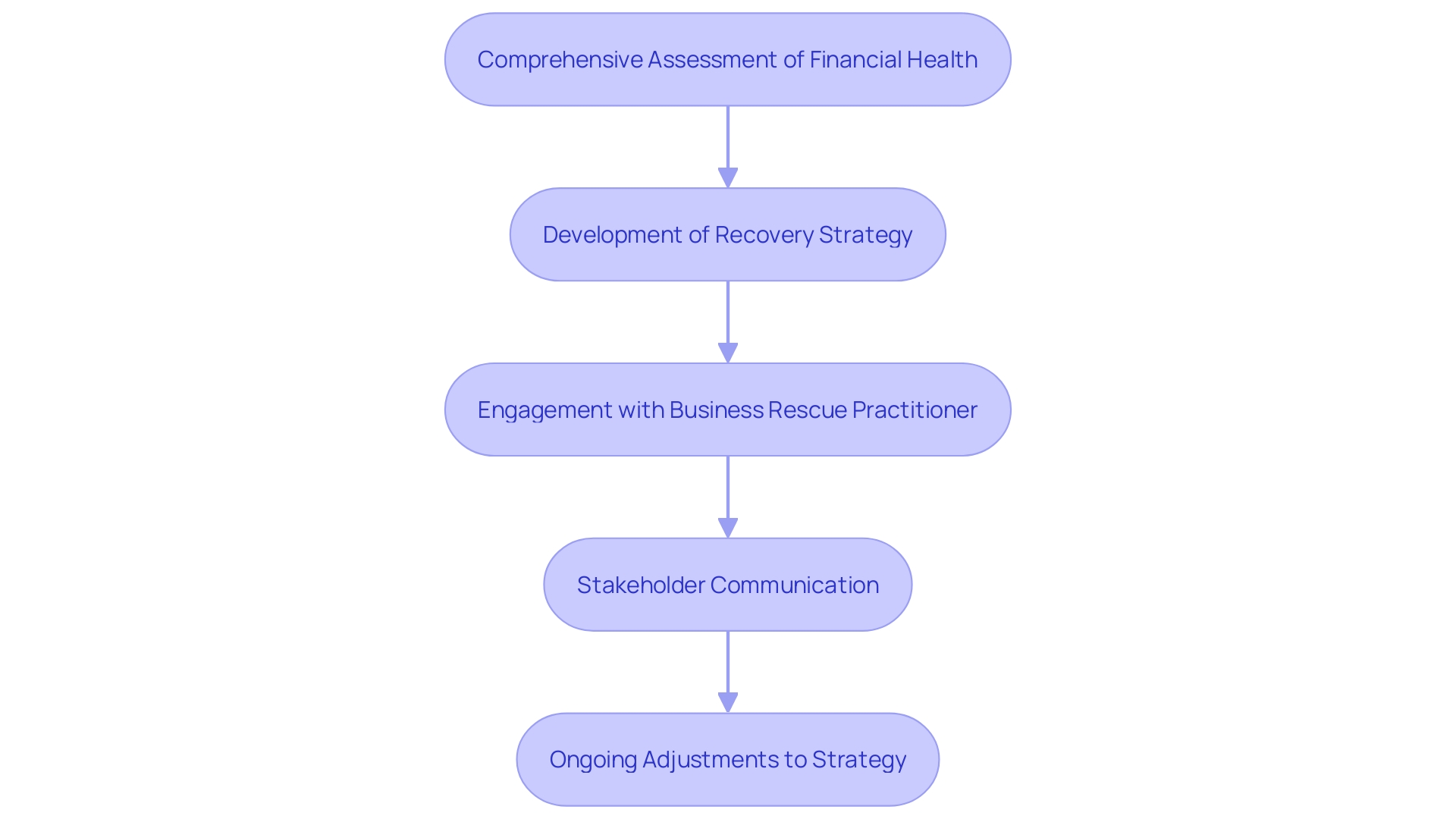
Case Study: Successful Business Rescue Strategies
Examining real-world examples of successful business rescue strategies can provide valuable insights for organizations facing similar challenges. One notable case is that of General Motors during the 2008 financial crisis, where the company underwent a structured bankruptcy process that involved significant restructuring of operations and debt. This comprehensive strategy enabled GM to emerge from bankruptcy stronger, emphasizing innovation and efficiency. Another example is the turnaround of the UK retailer, House of Fraser, which navigated financial difficulties by adopting a strategic restructuring plan focused on cost reductions and online sales growth. Analyzing these cases highlights the importance of decisive action, stakeholder engagement, and adaptability in the business rescue process.
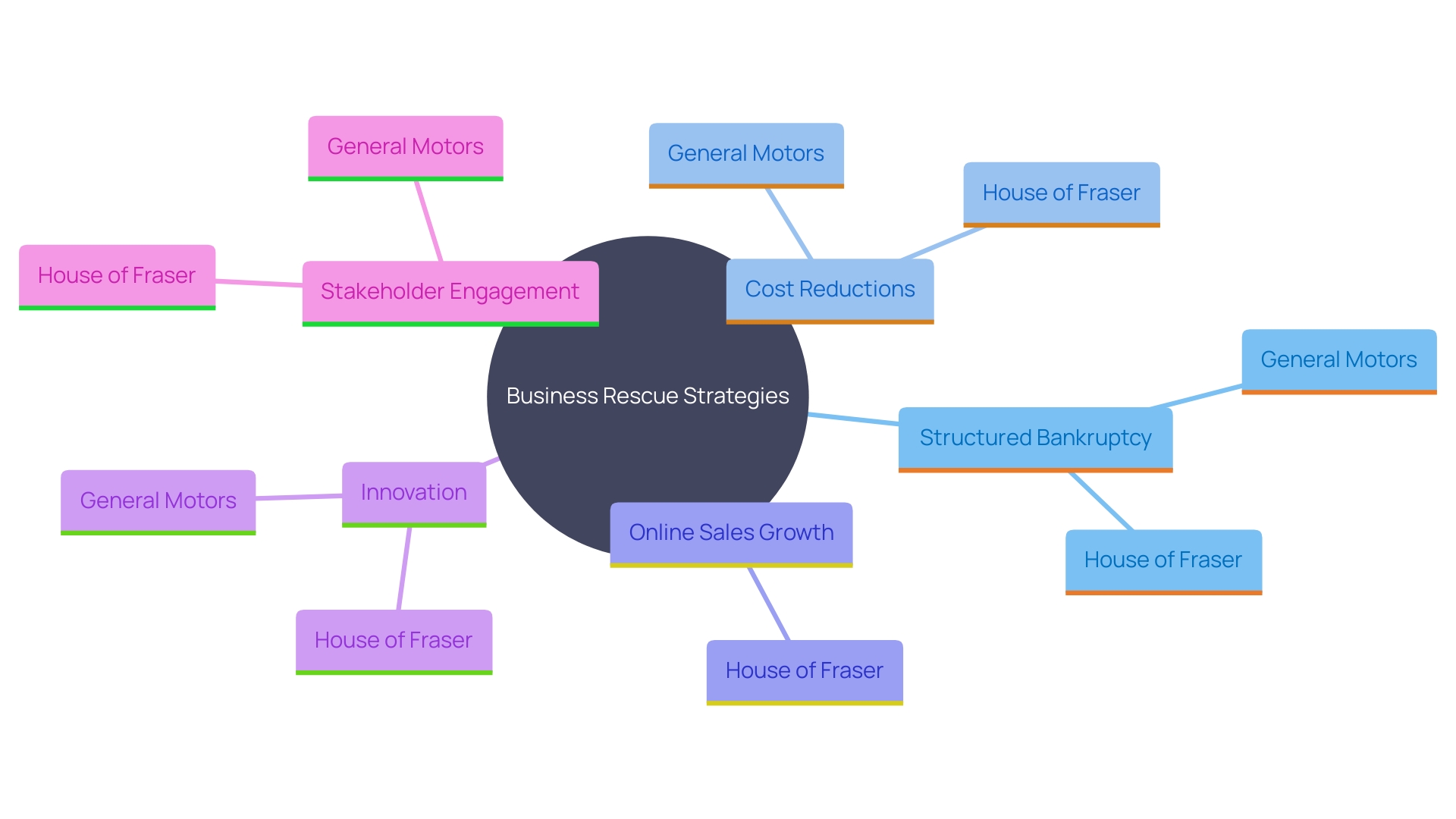
Conclusion
Navigating financial distress requires a multifaceted approach that balances legal frameworks, stakeholder interests, and effective management strategies. The differences in business rescue mechanisms across jurisdictions, such as the United States' Chapter 11 and the UK's Insolvency Act 1986, illustrate the importance of understanding local laws while also considering international provisions. Engaging a Business Rescue Practitioner (BRP) can significantly enhance a company's chances of recovery by leveraging their expertise to craft tailored rescue plans and facilitate negotiations with stakeholders.
Challenges are inherent in implementing these plans, particularly when it comes to securing creditor support and managing internal resistance. Transparent communication and strategic negotiation play crucial roles in overcoming these hurdles. Additionally, recognizing the right time to intervene is critical; early action can prevent further deterioration and create a conducive environment for recovery efforts.
A structured approach that includes thorough financial assessments, stakeholder engagement, and adaptive implementation is essential for overcoming insolvency. Successful case studies, such as those of General Motors and House of Fraser, reinforce the effectiveness of decisive action and strategic planning in business rescue. By adopting these insights and strategies, CFOs and business leaders can steer their organizations toward long-term stability and resilience in an ever-changing economic landscape.




